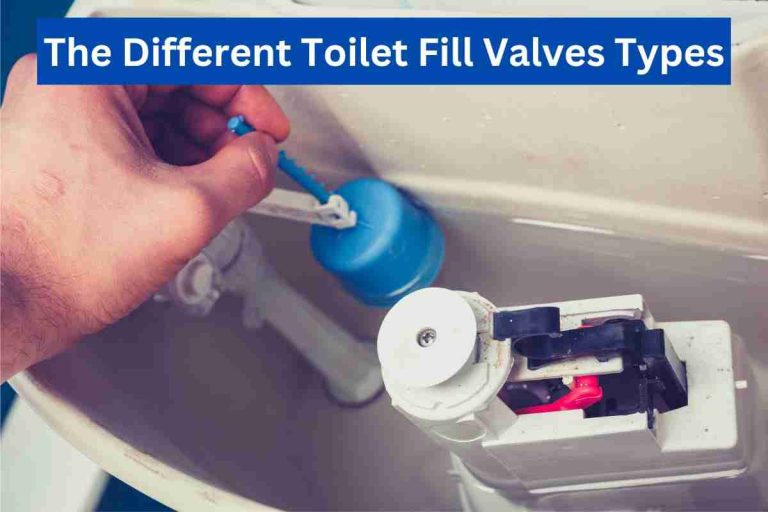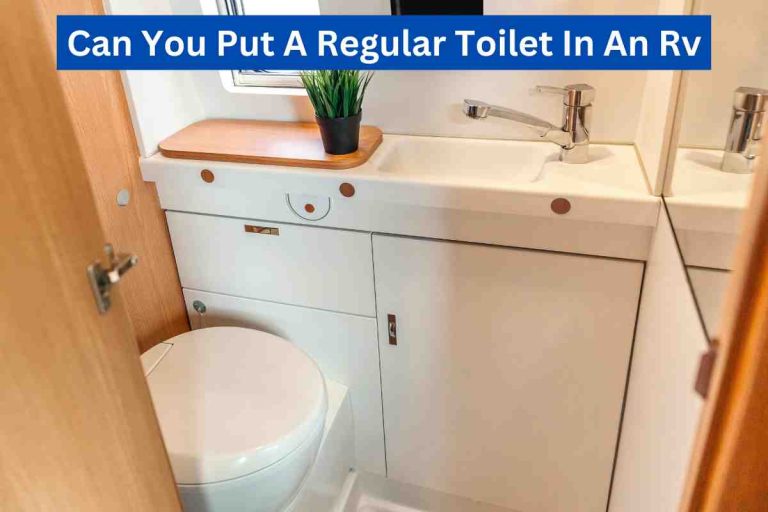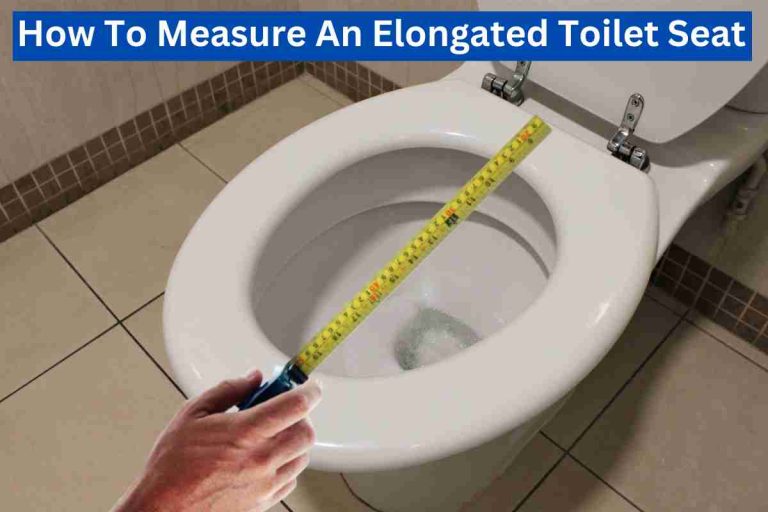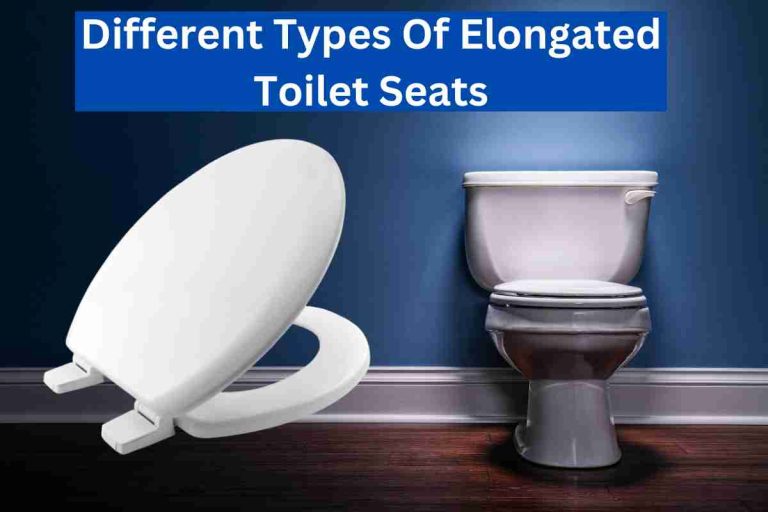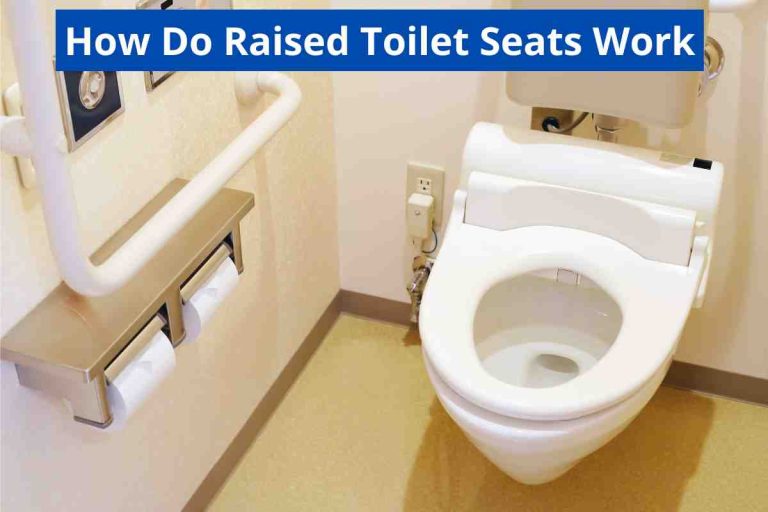Vault Toilet VS Pit Toilet(How To Build Camping Flush) 2024
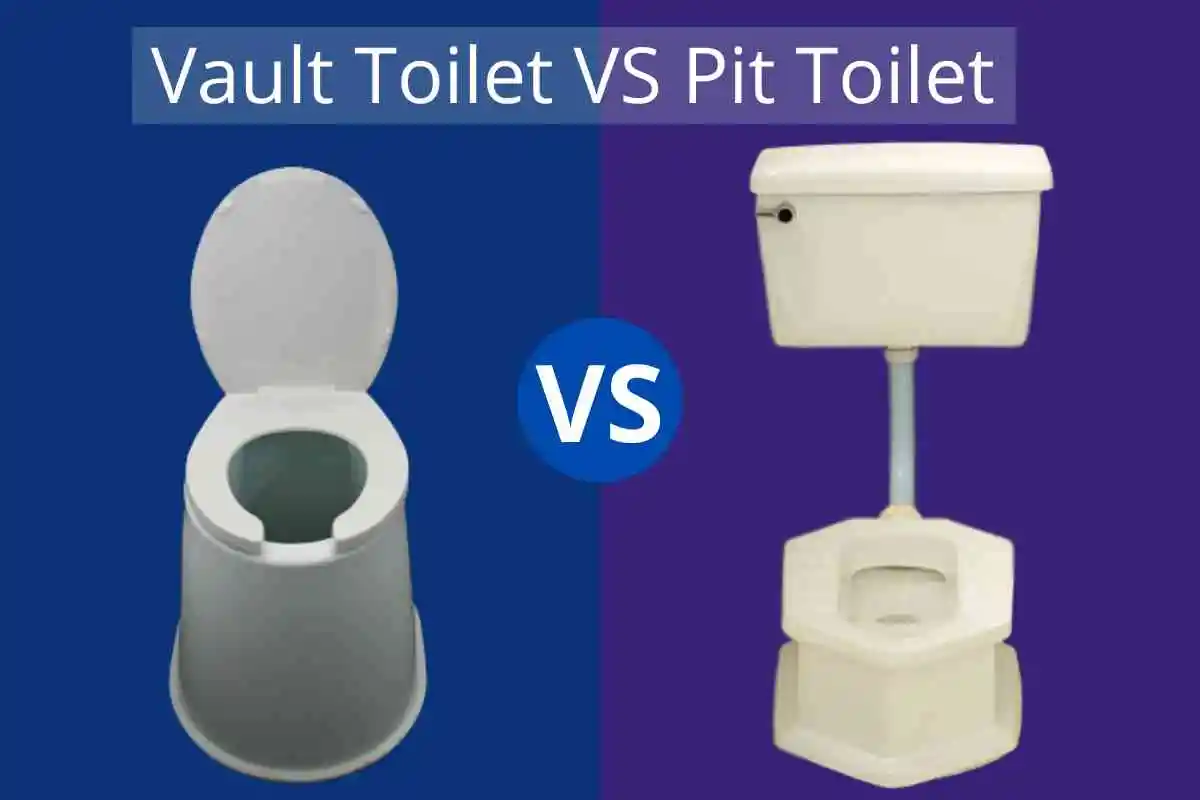
A professional team of Toiletsadviser presents a comprehensive comparison between the Vault toilet and Pit toilet. In a pit toilet, there are no buildings over the pit, rather it’s just a hole in the ground. In this hole, solid waste can be deposited until the hole reaches its full capacity and liquid waste drains through the soil to the ground. An underground vault toilet is enclosed by a building that covers the container. Wastes are contained until they are pumped out
As with vault toilets, pit toilets use a hole in the ground. Vault toilets deposit their waste in concrete tanks whereas pit toilets deposit their waste in unlined holes in the ground;
Table of Contents
Vault Toilet VS Pit Toilet – [Which is Better]
Pit toilets are better than vaulted toilets if you have a minimal waste situation. For temporary use while building a proper bathroom facility, a single individual or small family might dig a pit latrine. The waste produced from vault toilets can be disposed of quickly but vault toilet waste is harmful to the environment unlike waste from pit latrines that can accumulate in an open pit.
Pit toilet waste decomposes over time, so it doesn’t need to be emptied. Flies tend to gather around pit latrines as a result of this. As a pit toilet fills with waste over time, its lifespan is approximately five years. After you have completed this step, you will be able to relocate your pit toilet. Protect the environment by filling the old pit with soil.
The decomposition of waste can cause pit toilets to smell. Add lye to pit toilet waste to get rid of stinky waste. It is also important to have proper ventilation. Vault toilets are more permanent when properly maintained and serviced whereas pit toilets are best used as temporary solutions.
Let us describe each type of toilet in a depth detail
What are Vault Toilets?
Waste is stored underground in large airtight containers called vaults. Toilets in vaults are ADA-compliant and designed by the National Trust for Forestry to reduce reliance on American standard toilets. A variety of materials can be used to build these toilets including wooden frames, reinforced concrete, plastic and cross-linked polyethylene.
In contrast to flushing toilets that use water, vault toilets do not use water. Recreational areas, parks, campgrounds, and public areas with little water supply are ideal locations for this toilet.
The most common type of vault toilet is made of polythene or polyethylene which has proven to be very durable. Due to the materials used to construct these toilets, they are rarely prone to pollution.
Worth Reading:- Toto Vs Kohler Toilets
Things to Look at Before Having a Vault Toilet
Lets pen down the hidden feature of vault toilets that must be needed to address.
- It is not necessary to run water in order to use a vault toilet. That’s why It offers very good value for money. They are preferred in most areas over flushing toilets due to this factor.
- For a user of a vault toilet, it is comfortable as it allows them to be enclosed and safe.
- One person can use a vault toilet at a time because they are single units. This gives the user a high degree of privacy. A vault toilet is also big enough to change clothes or do anything else you couldn’t do while in public.
- A vault toilet has the advantage of being easy to maintain. Cleaning it once a week or twice a week will meet your needs as it’s not necessary to do so every day. Ensure that you dispose of waste regularly in order to prevent odors and overflowing waste.
- It is easy and inexpensive to install a vault toilet. The material used in its construction makes it durable. Additionally, they do not require water which reduces their cost.
- The portability of these is one of their best features. It can be moved and placed wherever you need it. They can be used immediately after installation.
- Convenience is the most important advantage. You can place a dry toilet wherever you need it due to its portability and functionality. Camping grounds, parks and even roadside toilets are readily available to save your time and energy.
- Lights are installed in some vault toilets to make them more convenient for users in the dark. Even some cleaning products have sanitizers and disinfectants. Hygiene is ensured in this way.
How Do Vault Toilets Work?
Without sewer lines or running water, vault toilets temporarily store human waste in an airtight underground container. In spite of the fact that vault toilets don’t have these features, they aren’t harmful to the environment. In remote camping sites and recreational parks, vault toilets are the preferred toilet option. Low maintenance and cleaning costs make them a good choice for privacy.
It is composed of two parts: a small cabin-like upper section and an airtight underground container called vault. It is easy to set up a vault toilet for some events or activities since it has a unisex design. From 1,000 to 13,000 gallons can be stored in an underground container.
Vault toilets are built by digging the ground to fit their shape and size. A slab is then laid over the vault’s top to provide stability after it is buried in the ground.
Within the vault, organic wastes are not only disposed of as urine and excrement. Since waste can’t decompose if not contained within the vault, this is crucial for ensuring the cleanliness of the toilet. In addition, shower cubicle water is directly pumped into the underground container.
To make it easier for sewage pumping trucks to access the vaults, these toilets are positioned near good access roads. The vault toilet’s ability to regulate unpleasant odors depends on some external factors. A taller vent is needed than the roof of the toilet booth. Additionally, the wind must carry the smell away; otherwise, the smell will accumulate around or in the building nearby the vault toilet. It is therefore crucial to have good ventilation.
What is a Pit Toilet
On-site waste is stored in pit toilets. The hole is not lined or treated and it is reinforced with a substance that secures waste in place. The service is available for a period of 10 to 30 years. It is important to note that other factors such as construction and frequency of use can affect the length of service.
The primary goal of a pit toilet is to collect waste material and to prevent environmental and health hazards from developing. Pathogen concentrations are not lowered by it. As a result, it has a huge effect on getting rid of pathogens based on the initial concentration it has. The right temperature and humidity level are required for it to happen.
Peoples Also Like: Low Flow Vs Regular Flushing Toilets
Things to Look at Before Having a Pit Toilet
Most pit toilets will need to be removed or buried within less than five years depending on how they are constructed and used. Let’s dig down in more detail:
- Pit toilets shouldn’t have drop holes larger than 25 centimeters. It’s important to keep in mind this to prevent accidents such as youngsters falling in it.
- It also prevents flies from coming into the room and prevents odors from escaping.
- Unlike regular toilets, pit toilets are dug deep into the ground. Into that pit goes all human waste. It takes a long time for human waste to decompose in the ground because it mixes with the soil. When it comes to waste disposal, pit toilets are better than vault toilets.
- Waste is not contained in a vault in a pit toilet. A pit is dug and waste is deposited directly into it. As it decomposes, there is no need to empty it. As a result, pit toilets are easier to maintain.
- Pit toilets are less expensive. A hole only needs to be dug. The waste decomposes on the ground without the need for a vault. Because of this, pit toilets are much less expensive than vault toilets.
- Ventilation is not necessary. By mixing the waste with the ground, it prevents bad odors and bad smells from spreading. Throw some sawdust after every use if there is any smell.
How Do Pit Toilets Work?
Alternatively known as pit toilets, pit latrines collect human waste in holes in the ground. To improve user comfort. A toilet seat or squatting pan may be attached to the drop hole in the floor that allows urine and feces to enter.
Most pit toilets are not used for more than 5 years before they become full and need to be emptied or covered. Depending on how they are designed and used, they can last from 10 to 30 years.
Most places have few alternatives besides digging new pit latrines or manually emptying pit latrines once their pits are full. Emptying latrines mechanically is an expensive and often dangerous practice in emergency and non-emergency settings
Using hand tools, vacuum trucks, pumps, or mechanical augers can be used to remove fecal sludge from full pit latrines.
Conclusion
There is a clear difference between a vault toilet and a pit toilet. Considering a vault toilet’s waste is contained within a container, it can become toxic when it becomes saturated. You can empty it to prevent this from occurring. If it is properly cleaned and maintained, it can last for many years.
Pit toilets are inferior to vault toilets in many ways. Since vault toilets do not allow us to dispose of sewage normally, the slurry created by them causes health problems. The problem can be prevented by emptying it. If you treat it well, it will last a long time.
{ "@context": "https://schema.org", "@type": "BlogPosting", "mainEntityOfPage": { "@type": "WebPage", "@id": "https://toiletsadviser.com/vault-toilet-vs-pit-toilet/" }, "headline": "Vault Toilet VS Pit Toilet(How To Build Camping Flush) 2024", "description": "As with vault toilets, pit toilets use a hole in the ground. Vault toilets deposit their waste in concrete tanks whereas pit toilets deposit their waste in unlined holes in the ground", "image": "https://toiletsadviser.com/wp-content/uploads/2023/02/Vault-Toilet-VS-Pit-Toilet.webp", "author": { "@type": "Person", "name": "Alex Miller", "url": "https://toiletsadviser.com/" }, "publisher": { "@type": "Organization", "name": "Alex Miller", "logo": { "@type": "ImageObject", "url": "https://toiletsadviser.com/wp-content/uploads/2022/03/cropped-android-chrome-512x512-4.png" } }, "datePublished": "2023-02-24", "dateModified": "2023-04-28" } { "@context": "https://schema.org/", "@type": "BreadcrumbList", "itemListElement": [{ "@type": "ListItem", "position": 1, "name": "Home", "item": "https://toiletsadviser.com/" },{ "@type": "ListItem", "position": 2, "name": "Blog", "item": "https://toiletsadviser.com/blog/" },{ "@type": "ListItem", "position": 3, "name": "Vault Toilet VS Pit Toilet", "item": "https://toiletsadviser.com/vault-toilet-vs-pit-toilet/" }] } { "@context": "https://schema.org", "@type": "FAQPage", "mainEntity": [{ "@type": "Question", "name": "What are Vault Toilets?", "acceptedAnswer": { "@type": "Answer", "text": "Waste is stored underground in large airtight containers called vaults. Toilets in vaults are ADA-compliant and designed by the National Trust for Forestry to reduce reliance on American standard toilets. A variety of materials can be used to build these toilets including wooden frames, reinforced concrete, plastic and cross-linked polyethylene." } },{ "@type": "Question", "name": "How Do Vault Toilets Work?", "acceptedAnswer": { "@type": "Answer", "text": "Without sewer lines or running water, vault toilets temporarily store human waste in an airtight underground container. In spite of the fact that vault toilets don’t have these features, they aren’t harmful to the environment. In remote camping sites and recreational parks, vault toilets are the preferred toilet option. Low maintenance and cleaning costs make them a good choice for privacy." } },{ "@type": "Question", "name": "What is a Pit Toilet?", "acceptedAnswer": { "@type": "Answer", "text": "On-site waste is stored in pit toilets. The hole is not lined or treated and it is reinforced with a substance that secures waste in place. The service is available for a period of 10 to 30 years. It is important to note that other factors such as construction and frequency of use can affect the length of service." } },{ "@type": "Question", "name": "How Do Pit Toilets Work?", "acceptedAnswer": { "@type": "Answer", "text": "Alternatively known as pit toilets, pit latrines collect human waste in holes in the ground. To improve user comfort. A toilet seat or squatting pan may be attached to the drop hole in the floor that allows urine and feces to enter." } }] }
I’m Alex Miller, a specialist in all things toilet plumbing. With over 5 years of dedicated experience in the field, I’ve seen it all and fixed it all when it comes to toilets. Whether you’re dealing with a stubborn clog, a leaky tank, or just looking for the best toilet for your home or commercial space, I’ve got you covered.
My journey as a toilet plumber has taken me into countless homes and businesses, where I’ve tackled many toilet issues. From the most common problems to the trickiest of challenges, I’ve honed my skills to ensure your toilet works flawlessly.
At https://toiletsadviser.com/, I’ll share my expertise and insights to help you keep your toilet in top-notch condition. Plumbing issues are frustrating, but with the right guidance, you can avoid them or resolve them swiftly. I aim to simplify your life by providing easy-to-understand tips and solutions for common toilet plumbing problems.
I’ll also review the best toilets and brands available on the market. With so many options, choosing the perfect toilet can be overwhelming. That’s where my expertise comes in. I’ll break down the pros and cons of different models, helping you make an informed decision that suits your needs.
So, whether you’re dealing with a troublesome toilet issue or simply looking to upgrade to a more efficient and comfortable throne, stay tuned to https://toiletsadviser.com/. I’ll be your trusted source for expert advice and recommendations in the world of toilets.
